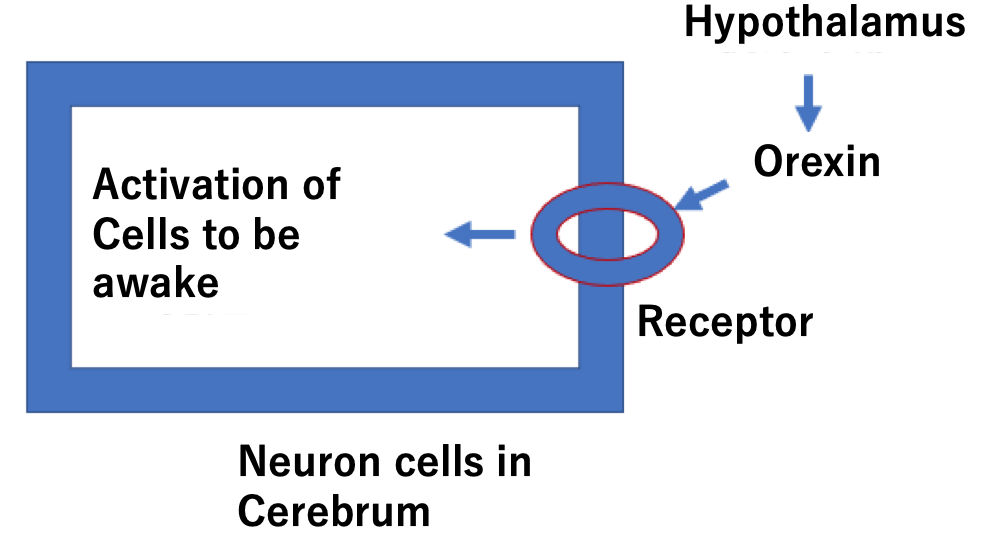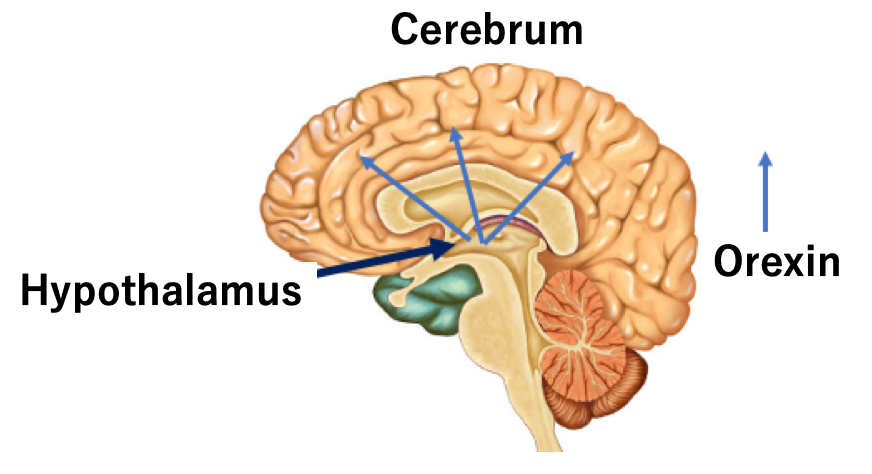
How about your sleep?
As you can see on the cover of this website, rape blossoms are blooming on Awaji Island, and the cherry blossoms will soon be in full bloom. It is around this time of year that many people are likely to be sleepy in the spring, but this is a good time to take a look at how much we know about sleep. Japan is at the forefront of research into sleep. This is because research by Professor Yanagisawa’s group at the University of Tsukuba on sleep is listed as a candidate for the Nobel Prize in Physiology or Medicine every year. Let’s take a look at what has been revealed about sleep by referring to an introductory book on sleep for the general public (The Science of Sleep (Revised New Edition), Bluebacks, Kodansha, 2017) written by Professor Sakurai Takeshi, a young researcher in this group and the discoverer of orexin, a hormone released from the brain that is deeply involved in sleep, as described below. Because good sleep is essential for a well-being life.
In sleep, the body is able to rest without moving. However, if the body receives any kind of stimulation, it will wake up immediately. Naturally, the brain is involved in this. The function of the cerebrum is essential for moving the body and seeing and hearing the outside world. When we are asleep, most of the cerebrum is resting. For this reason, to understand sleep and waking, it is necessary to understand the mechanism that stops and starts the cerebrum. Meanwhile, sleep research has shown that there are two different mechanisms of sleep, called REM sleep and non-REM sleep. In REM sleep, the eyes are seen moving while sleeping, so it is called REM (Rapid Eye Movement) sleep, and part of the cerebrum is active. However, most of the cerebrum, especially the frontal lobe related to thinking and movement, is inactive. It is during REM sleep that we dream. In dreams, irrational things happen and the context can be unclear, but this is because the frontal lobe that controls reason is not working. On the other hand, in non-REM sleep, all of the cerebrum is inactive and the muscles of the body are resting. Therefore, in non-REM sleep, we do not dream. It is thought that an important purpose of sleep is to rest the brain through non-REM sleep. On the other hand, REM sleep is necessary for the brain to organize what has been experienced during the day. Non-REM sleep and REM sleep alternate in repeated sets after going to bed. The sensation lasts for 90 to 100 minutes.
Narcolepsy is a disease that causes a state similar to non-REM sleep. People with this disease switch between wakefulness and sleep randomly, and while they have been talking up until now, they suddenly collapse into a sleep state. Dr. Sakurai from Dr. Yanagisawa’s group succeeded in identifying the cause of narcolepsy and published a paper in 1998. The process leading up to the discovery is described in detail in the book by Dr. Sakurai mentioned above. I would like to touch on it briefly here.
There are different parts of the brain, including the cerebrum and hypothalamus, that have different functions, but they work together. This work is achieved when hormone-like factors secreted from different parts bind to different parts of the brain after secretion and activate those parts. There are three main types of hormone-like factors: amino acids (glutamic acid, glycine, GABA, etc.), amines, which are amino acids with carboxylic acids removed (catecholamines, adrenaline, etc.), and peptides, which are made up of several amino acids linked together (orexin, vasopressin, etc.). These hormone-like factors bind to receptors on the cell membrane of target cells after secretion. There are three main types of receptors, and their structures and functions are known in detail. Dr. Sakurai and his team focused on receptors that bind to a type of peptide hormone. In particular, they focused on receptors that bind to unknown peptides (called orphan receptors) and developed a new method to systematically elucidate the set of novel receptors and the hormones that bind to them. In this method, the gene for the receptor of interest is artificially expressed in a model cell, and various protein hormones are given to the cell. This is an experimental system that captures whether the receptor functions as a result. If you want to know more, please refer to Dr. Sakurai’s paper, as it is a bit technical. The method itself is unique (Discovery of Orexin, Takeshi Sakurai, Pharmacology Journal (2007) 130, p19). As a result of these efforts, a new hormone and its receptor were predicted in 1997, and the receptor and hormone were actually identified and published (Sakurai T. et al. Cell 1998, 92, p696). They are orexin A, a peptide consisting of 33 amino acids, and orexin B, consisting of 28 amino acids. Both are produced in a part of the hypothalamus deep in the brain. This area is known to control appetite, and Dr. Sakurai and his colleagues initially discovered that injecting orexin into the brains of mice increased appetite. They then discovered that when he artificially created mice with a knockout orexin gene, they developed symptoms of narcolepsy, making it clear that orexin is involved in maintaining a state of wakefulness. Subsequent research revealed that orexin is produced in the hypothalamus, secreted into the brain, and binds to receptors widely present in the cerebrum, activating the cerebrum and maintaining wakefulness. Based on this, in collaboration with a pharmaceutical company, they invented a drug that binds to the receptors, and discovered that administering this drug promotes sleep. In fact, it is currently being used to treat insomnia.


The hypothalamus, which generates orexin, is the key to the autonomic nervous system and serves as a pathway for various human senses to reach the cerebrum. It is believed that this is also related to the fact that sleep is affected by anxiety. It is also close to the suprachiasmatic nucleus, which is the center of the biological clock that exists in the human body from birth and keeps time, and is influenced by it. It is thought that the repetition of sleep and wakefulness is also influenced by this biological clock, but not everything is clear. It is already known that sleepiness is related to the accumulation of hormones related to the generation of sleepiness, such as melatonin, but there is a hypothesis that some other important substances that have not yet been identified are accumulated in the brain. There seems to be something important other than orexin that initiates sleep. Dr. Yanagisawa’s group is conducting research to clarify this new mechanism. Future developments are expected.
